Guest post courtesy of Sarah King, The views and opinions expressed in this article are those of the guest author and do not necessarily represent the views of Val Heart & Heart Communication Enterprises Inc.
Understanding your horse’s tail
Whether wispy or luxurious, flowing, braided or banged, a horse’s tail is perhaps his most beautiful and versatile physical feature. Much more than mere ornament or glorified flyswatter, the tail serves many purposes. Tails are vital communication centers for your horse, relaying messages about moods, health, energy and locomotion.
As a device of communication, it speaks simply and eloquently to horse and to man; as a barometer of equine health, it telegraphs vital messages about an animal’s well-being; as a protective shield, it assists in temperature regulation and safeguards delicate reproductive structures against environmental onslaught; and as a mechanism of balance, it subtly influences the alignment of the horse’s hind end. How can a structure largely prized for its aesthetic appeal be so practical an appendage as well? That answer can be found by taking a look at the anatomy and evolution of the tail.
The Inside Story
Flexible and strong, the horse’s tail is part of his spinal column. It is made up of approximately 18 vertebrae–some horses have more, others have fewer. The bones are progressively smaller from the root of the tail to the tip; the last one is pointed.
Overall tail movement is governed by portions of the semitendinosus muscles, which extend over the horse’s rump and attach to the vertebrae. Detailed adjustments in curvature and posture of the tail are aided by muscle-fiber bundles located in the tail itself, above, below and on each side of the bones.
Two arteries pump blood to the tail, but circulation is not efficient in this narrow appendage. As a result, injuries heal more slowly here, and infections tend to persist stubbornly.
On the exterior, the skin and hair of the tail actually are enhanced versions of the horse’s fuzzy hide. For instance, at the point where the tail attaches to the buttocks, the skin is five-eighths of an inch thick–as much as a half-inch thicker than it is anywhere else on the horse. Thicker and coarser than any body hair, the strands of the tail are made entirely of hardened (keratinized) protein. A typical tail hair consists of three layers; an inner core (medulla); the middle cortex layer comprised of long, twisted protein strands; and a thin protective outer covering known as the cuticle. Through it appears smooth, the cuticle actually is made of overlapping horny scales.
Straight or curly?
It’s the middle layer that determines whether a hair is curly or straight. The individual protein strands vary in their physical properties, such as how stretchy they are, but usually they are distributed evenly, so that the hair looks straight. However, if too many strands with similar properties are grouped together, the cortex is no longer balanced and the hair develops waves. Straight hair generally is the rule among horses, but a few breeds, notably Morgans and some draft horses, can sport wavy tails. The most extreme example of an eccentric cortex is the Bashkir Curly–not only are his tail and mane frizzy, but his body is completely covered in split curls.
Some breeds, such as the Andalusian and Friesian, are known for the extraordinary length and luxury of their tails. Like their curly-coated counterparts, these horses possess a specific combination of genes that produce their magnificent tresses. Genetic factors also combine with environmental influences to determine which horses have rough, coarse, protective tail hair–for instance, the dense, heavy tails of Shetland ponies and Icelandic horses–and which ones possess fine, silky locks–the desert-roaming Arabian is a prime example.
What no one really knows, though, is why the horse is the only member of the equine family to have such long, flowing locks. His history, however, does hold some clue.
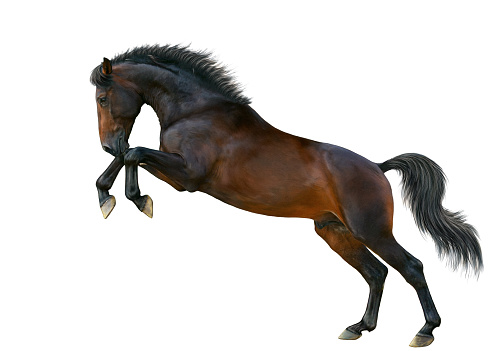
From the Dawn of Time
In prehistoric oceans, creatures that pushed with their tails to move in straight lines went to the top of the food chain as sharks and other fishes. Amphibians retained powerful propulsive tails even as their ungainly legs emerged. Eons before the equine species existed, land reptiles’ (dinosaurs) legs protruded from the sides of their heavy bodies. Long, heavy tails were critical to these animals’ ability to get from place to place. They were used as counterbalances for maneuvering around corners and tillers for moving in a straight line.
By the time the horse’s early ancestor hyracotherium appeared sometime in the Eocene epoch, the tail already had reached the point of being largely nonfunctional as a locomotor device. Hyracotherium looked and moved in a drastically different way than its ancestors. Its knees were turned forward, its elbows backward and its limbs were tucked under the body.
Stuart Sumida, PhD, hypothesizes that the adaptations were related to the survival of the species. “Hyracotherium relied on speed to evade its predators,” he says. “This new type of physique allowed the creature to move more quickly. The importance of the tail as a locomotor device was greatly diminished. It was essentially freed up to become what it is today.”
Compared to the functional abilities of other mammalian tails, the horse’s caudal appendage, according to Sumida, deserves only a so-so rating. It’s far inferior to that of a cat, for example, whose tail is wonderfully dexterous, he says, infinitely expressive and a real asset to the amazing array of bodily convolutions a cat can perform.
Given its somewhat diminished importance, then, why was the equine tail retained at all? Deb Bennett, PhD, an expert on equine physiology, speculates that there were two compelling reasons: It was there anyway, and the horse needs it. “Nature has a tendency to retain some evidence of the primitive,” she says. “We see that over and over again in evolutionary processes. Then, too, the horse’s tail does serve some real purposes–protection for one, communication for another.”
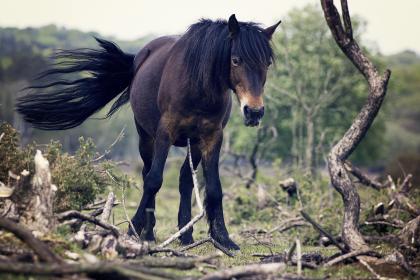 Equine Body Language
Equine Body Language
Horses relate through body language, and the tail is one of their most expressive “talking” parts. It is used to communicate information about their physical and emotional states both within the herd and between horse and rider.
The consummate herd animal, the horse depends on his equine peers for his very survival. Over millions of years, horses have developed a complex system of tail signals that enable members of a herd to “discuss” matters that are essential to group maintenance. Reproductive success, for example, is necessary to herd stability, and some tail signals are devoted exclusively to communications regarding procreation. In the presence of stallions, mares in heat will lift their tails up and to one side–sort of a “come hither” motion to indicate sexual receptiveness. If they’re already in foal, they will warn away would-be suitors with an aggressive side-to-side swish of the tail.
The survival of the herd depends on the group’s ability to communicate and detect danger. A slightly raised tail, in combination with the “ready” stance–weight on all four feet, ear pricked forward–means “Alert! Stop what you’re doing and await further instructions!” Protective stallions, in displays to frighten off invaders, will lift their tails, prance and defecate.
As members of a herd hammer out their hierarchy and preferred relationships, their tails speak of hostilities quashed, disciplinary measures taken and friendships formed. Standing head-to-tail in groups of two, longtime pals contentedly swish flies from each other’s faces. Frisky foals engage each other in games and races with their tails held high, a sure sign of excitement and high spirits. But overly boisterous youngsters and bold upstarts often will be warned off by an elder’s hunched rump and twitching tail, indicating readiness to deliver a good, swift kick to the offender. The subordinate animal, duly chastened, clamps his tail between his hind legs, finally rendering to his superior.
What’s That, You Say?
Horses speak to their human companions in similar way. And an owner who “tunes in” soon learns to read and heed his equine charges’ body language. In general, the tail complements the position and attitude of the horse’s head and neck: When they’re up, it’s up, and vice versa.
A horse who swishes his tail from side to side in an agitated manner is not pleased with what he’s being asked to do, says Katherine Houpt, VMD, PhD. “The activity is causing him either psychological or physical discomfort,” she says, “and the situation should be analyzed to discover the root of the problem.”
Another signal–a tightly clamped tail–can be read in either of two ways. Accompanied by bunched rump muscles, it’s a sure-fire sign that the horse is ready to explode. “Get ready for a buck or a kick,” warns Houpt. But if the horse is standing still, looking miserable, and perhaps occasionally stamping his feet, it’s an indication of discomfort in the belly or hindquarters.
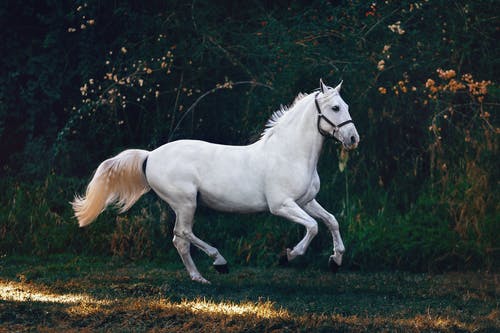 Rx for a Healthy Tail
Rx for a Healthy Tail
The best way to maintain a tail’s good looks and function is to keep it clean and in top condition. Unfortunately, though tail skin feels tough and those hairs look impenetrable, the equine tail isn’t immune to injury and disease. But conscientious care can make the difference between lush and scraggly.
Healthy tail hairs are elastic and shiny, thanks to the lubricating sebum excreted from oil glands at the base of the hair follicles. It’s perfectly normal to find dead hairs among the healthy ones–they’re victims of the normal growth-death-replacement cycle as the body constantly replenishes itself. But beware of dull, brittle tail hairs and hair falling out by the handful–these could signal the onset of disease or a dietary deficiency and require prompt attention.
As for cleanliness, professional trainers and grooms advise washing the tail only when necessary. Frequent shampoos dry out hair and skin by interfering with the distribution of natural oils produced by the sebaceous glands. A once-a-month once-over is enough to maintain healthy-looking tail hair.
When washing, be sure to wet all the hair well. Drench it right down to the tailbone and work a mild shampoo into the innermost tresses. Rinse thoroughly–soap residue can dry and irritate skin and provoke tail rubbing. Use a good-quality conditioner and leave it in for several minutes; then rinse again until the water runs clear.
To minimize breakage, don’t comb the tail while it’s wet. Wait until the hair is completely dry, and then pick out tangles with your fingers or comb, A brush with flexible metal tines and cushioned tips works well, too. But don’t use stiff plastic grooming aids–they tend to damage hair shafts and pull out healthy hairs.
To brush or comb, start at the ends and work up. Grab a one-inch hunk and fan it out to detangle individual hairs. Continue until you’ve groomed the entire tail.
Baby oil as a grooming aid enhances the hair’s condition and shine, and helps control dandruff. Silicone sprays add temporary luster for the show ring, but it’s best to wash them out after the show since they ultimately dry the hair.
Enjoyed this article about your horse’s tail? Here are three more you may like:
Whole Horsemanship with Penny Stone on the Real Dr Doolittle Show™
Socialization with Horses, Dogs, Cats With Dr Sid Gustafson on the Real Dr Doolittle Show
Animal Reincarnation and Souls with Jenny Smedley on The Real Dr. Doolittle Show™
This article originally appeared in the August 1993 issue of EQUUS magazine and was ppreviously published Octoober 2, 2014. It was updated on August 7, 2022.

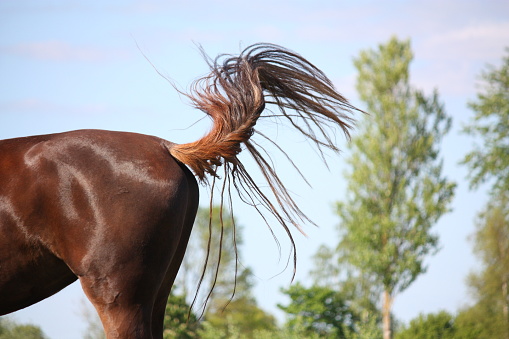
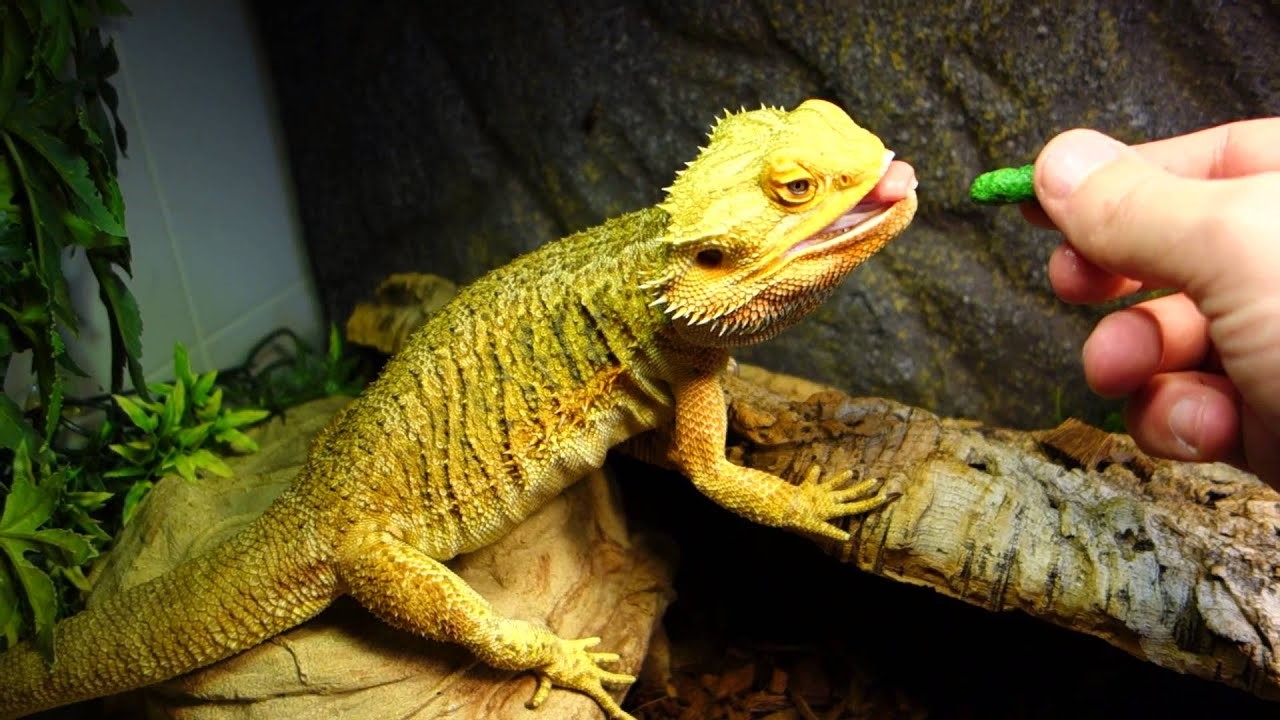
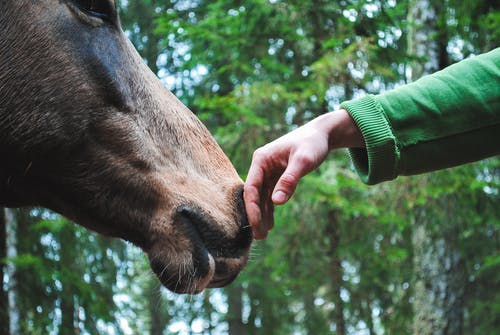

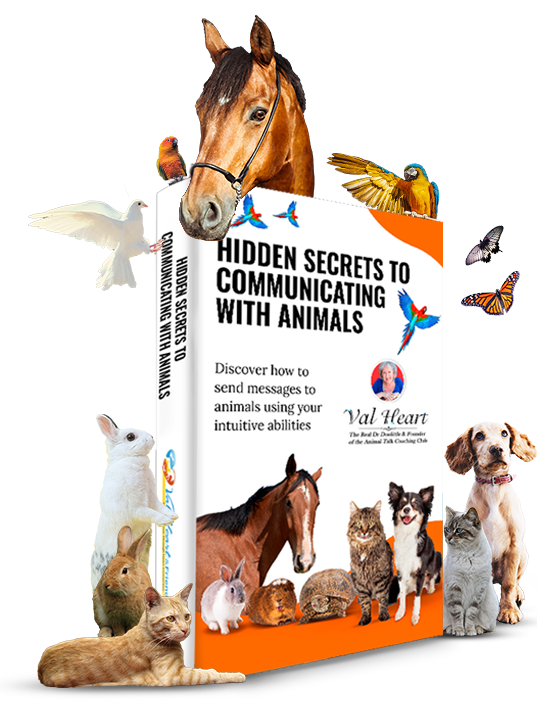
I am also commenting to let you know what a amazing discovery my cousin’s princess encountered visiting your web site. She even learned some things, most notably what it’s like to have a wonderful giving nature to let folks smoothly know precisely several impossible things. You actually exceeded her expected results. Thanks for imparting these valuable, safe, revealing as well as fun thoughts on that topic to Sandra.